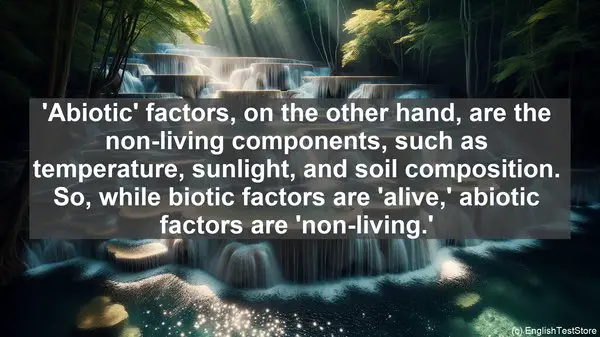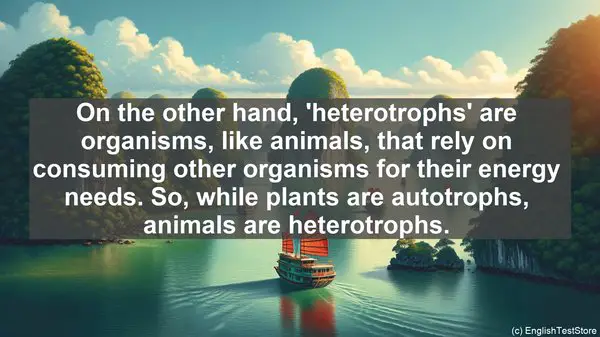Introduction
Today, we’re going to dive into the fascinating world of plant ecology. But before we do, let’s address something important. Have you ever come across words in this field that seem to have similar meanings, making it challenging to differentiate between them? Well, you’re not alone. In this lesson, we’ll explore the top 10 commonly confused words in plant ecology, ensuring that by the end, you’ll have a crystal-clear understanding of each term.
1. Community vs. Ecosystem
Often used interchangeably, ‘community’ and ‘ecosystem’ have distinct meanings. A ‘community’ refers to the various populations of different species coexisting in a specific area. On the other hand, an ‘ecosystem’ encompasses not just the living organisms but also the non-living components, such as soil, water, and climate. So, while a community is a part of an ecosystem, the latter is a broader concept.
2. Habitat vs. Niche
While studying an organism’s environment, you’ll frequently encounter the terms ‘habitat’ and ‘niche.’ A ‘habitat’ refers to the physical location where an organism resides, including its surroundings. On the other hand, a ‘niche’ is the role or position that the organism occupies within its habitat, including its interactions with other species and its utilization of resources. So, while a habitat is the ‘address,’ the niche is the ‘occupation’ of an organism.
3. Photosynthesis vs. Respiration
Both photosynthesis and respiration are vital processes for plants, but they occur in different contexts. ‘Photosynthesis’ is the process by which plants convert light energy into chemical energy, utilizing carbon dioxide and releasing oxygen. On the other hand, ‘respiration’ is the process by which plants break down organic compounds to release energy, utilizing oxygen and producing carbon dioxide. In simple terms, photosynthesis is about energy production, while respiration is about energy release.
4. Autotroph vs. Heterotroph
When it comes to obtaining energy, organisms can be broadly classified into autotrophs and heterotrophs. ‘Autotrophs’ are organisms, like plants, that can produce their own food using external resources like sunlight or chemicals. On the other hand, ‘heterotrophs’ are organisms, like animals, that rely on consuming other organisms for their energy needs. So, while plants are autotrophs, animals are heterotrophs.
5. Primary Succession vs. Secondary Succession
In the process of ecological succession, there are two main types: primary and secondary. ‘Primary succession’ occurs in an area that is devoid of any life, such as a newly formed volcanic island. Here, organisms gradually colonize the area, starting from pioneer species. ‘Secondary succession,’ on the other hand, occurs in an area that has been previously inhabited but has undergone a disturbance, like a forest fire. Here, the process of colonization and regrowth occurs, but with the advantage of existing soil and seed banks. So, primary succession is from scratch, while secondary succession is a ‘rebuilding’ process.

6. Endemic vs. Exotic
When discussing species distribution, ‘endemic’ and ‘exotic’ are commonly used terms. ‘Endemic’ species are those that are native or restricted to a particular geographic area, often due to factors like isolation. On the other hand, ‘exotic’ species are those that have been introduced to an area outside their native range, either intentionally or unintentionally. So, while endemic species are ‘homegrown,’ exotic species are ‘foreign.’
7. Mutualism vs. Commensalism
In ecological interactions, mutualism and commensalism are two types of symbiotic relationships. ‘Mutualism’ is a relationship where both species involved benefit from the interaction. For example, certain plants and pollinators. ‘Commensalism,’ on the other hand, is a relationship where one species benefits, but the other is neither harmed nor benefited. For example, certain birds building nests in trees. So, while mutualism is a ‘win-win,’ commensalism is a ‘win-neutral’ relationship.
8. Biotic vs. Abiotic
When studying the factors that influence an ecosystem, we categorize them into biotic and abiotic. ‘Biotic’ factors are the living components, such as plants, animals, and microorganisms. ‘Abiotic’ factors, on the other hand, are the non-living components, such as temperature, sunlight, and soil composition. So, while biotic factors are ‘alive,’ abiotic factors are ‘non-living.’
9. Deciduous vs. Evergreen
When it comes to trees, ‘deciduous’ and ‘evergreen’ are two common classifications. ‘Deciduous’ trees shed their leaves during a particular season, often winter, as a response to factors like temperature and light availability. ‘Evergreen’ trees, on the other hand, retain their leaves throughout the year, with some leaves being shed and replaced periodically. So, while deciduous trees have a ‘leafless’ phase, evergreen trees are ‘always leafy.’

10. Invasive vs. Native
In the context of species, ‘invasive’ and ‘native’ are terms used to describe their origin and impact. ‘Invasive’ species are those that have been introduced to an area outside their native range and have the potential to cause harm to the ecosystem, often by outcompeting native species. ‘Native’ species, on the other hand, are those that naturally occur in a particular area. So, while native species are ‘homegrown,’ invasive species are ‘intruders.’
